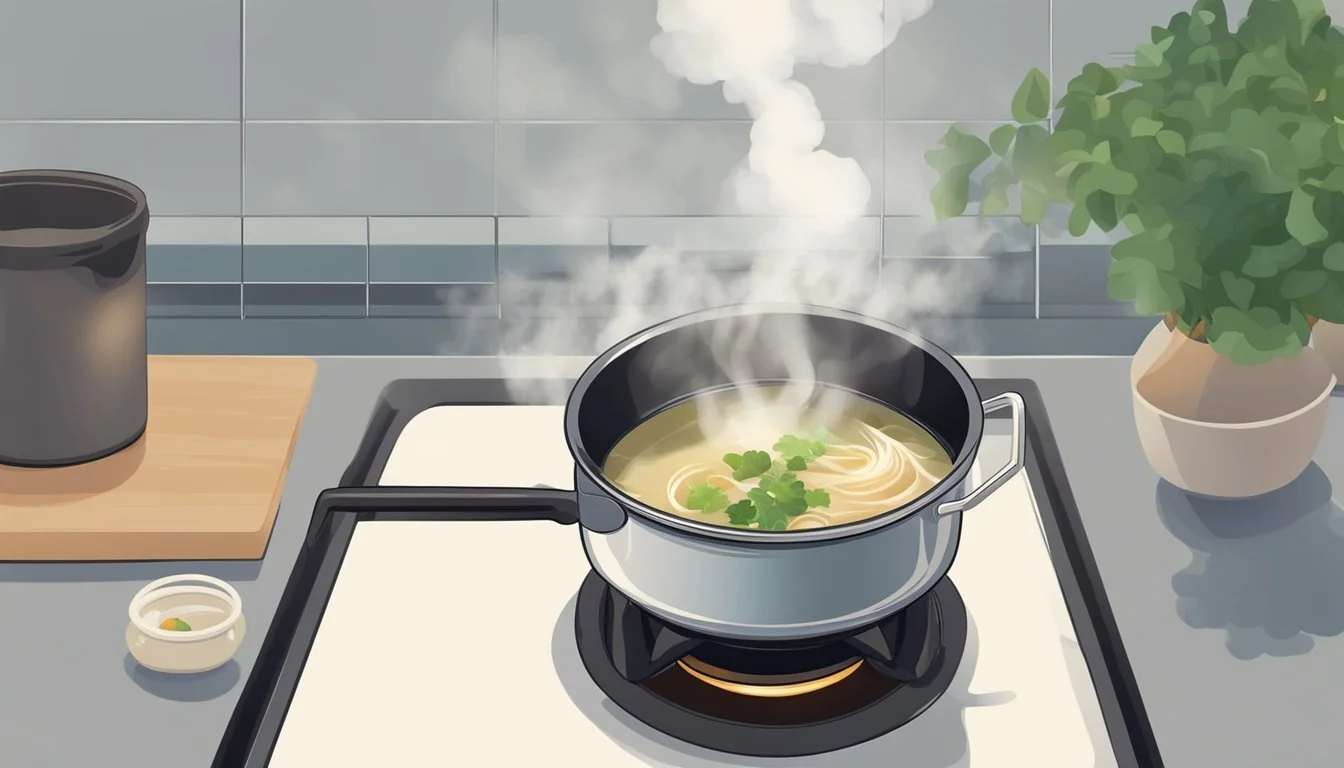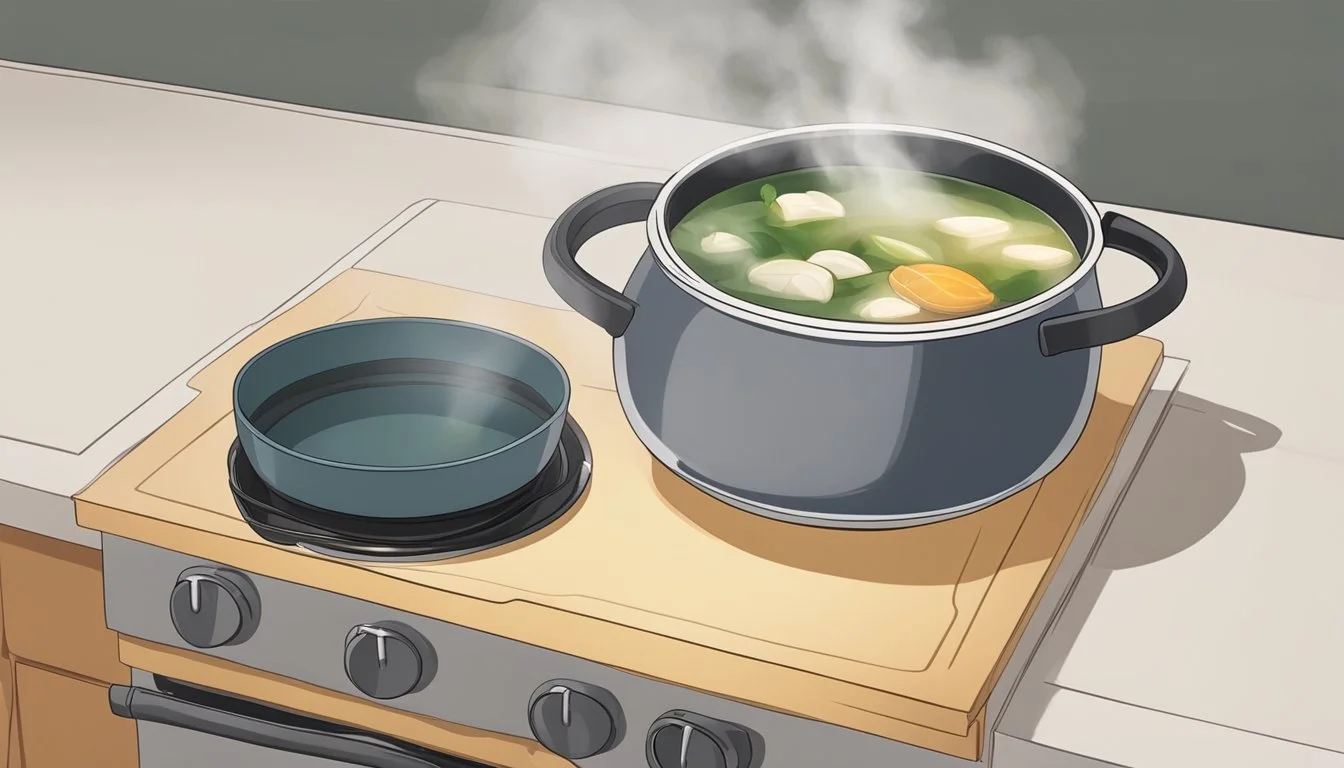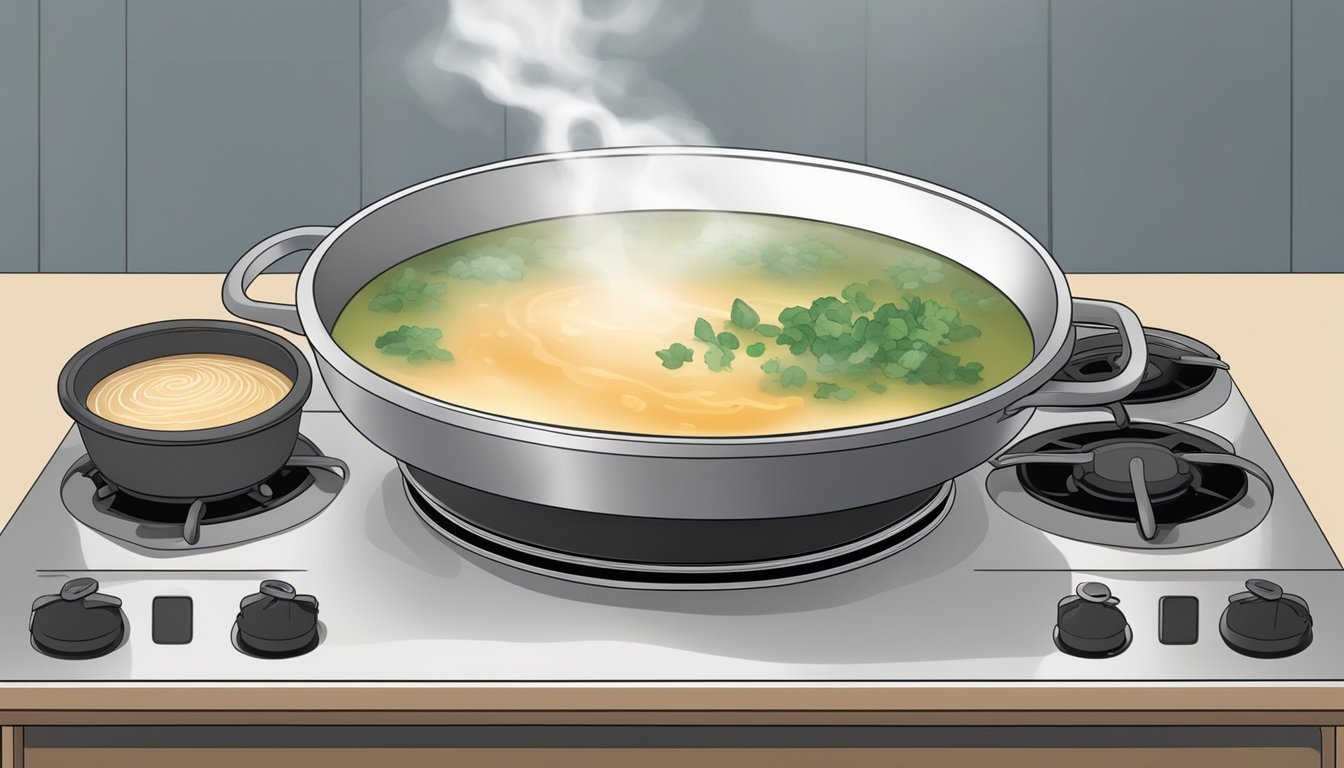Best Way to Reheat Miso Soup
Preserving Its Subtle Qualities
Miso soup is a traditional Japanese dish known for its rich umami taste and comforting warmth. Integral to its delicate flavor is the miso paste—a fermented soybean paste—that offers a complex, savory depth. When reheating miso soup, the key to preserving its unique taste and health benefits is a gentle approach. Extreme heat can not only degrade the subtle flavors of the miso but can also lead to nutritional loss, which is why maintaining the correct temperature during reheating is crucial.
Reheating miso soup requires a careful balance between restoring it to a pleasing warmth and ensuring that the sensitive components like probiotics, inherent to miso paste, remain intact. Unlike many other soups (What wine goes well with soups?) that can withstand vigorous heating, miso soup should never be brought to a boil. A low to medium temperature and consistent stirring can help to evenly distribute heat without damaging the integrity of the miso. This method ensures that the soup reaches a safe and enjoyable temperature without compromising its flavor or health-giving properties.
When serving miso soup, whether it's a leftover or prepared in advance, the experience can be almost as good as when it was freshly prepared, provided the reheating is done correctly. With a patient and attentive method, the soup's aromatic broth, soft tofu, and tender seaweed can be enjoyed with its distinct characteristics preserved. This reflects not only a respect for the traditional preparation of the cuisine but also a consideration for the sensory qualities that make miso soup a beloved dish across the world.
Understanding Miso Soup
Miso soup, a staple in Japanese cuisine, is revered for its rich umami flavor and delicate balance of ingredients. How these components are combined and heated significantly impacts the soup's overall quality.
Key Ingredients
The fundamental components of miso soup are miso paste and dashi. Miso paste, the soul of the soup, is a fermented concoction made primarily from soybeans, salt, and koji (a fermentation starter). It provides miso soup with its characteristic umami flavor and contributes to the depth and complexity of the soup's taste profile.
Dashi, a stock usually made from dried kelp (kombu) and shavings of preserved, fermented tuna (bonito flakes), infuses the soup with a subtle yet distinctive seafood background, pivotal for attaining the authentic flavor of miso soup.
Miso Paste: Fermented soybeans provide umami and complexity.
Dashi: Dried kelp and bonito flakes offer a nuanced flavor foundation.
The Delicate Nature of Miso
The composition of miso soup counts on the careful handling of its namesake ingredient: miso paste. Heat affects miso paste significantly, so it’s essential to understand how reheating impacts the flavor and texture of the soup. Excessive heat can diminish the nuanced flavors and erode the healthful properties of the fermented paste, while just the right level of warmth amplifies the paste's inherent savory qualities without spoiling the flavor balance. Therefore, attention to temperature is paramount when reheating miso soup to maintain its delicate profile and keep its heartwarming qualities intact.
Storing Miso Soup
Proper storage of miso soup is crucial to maintain its flavor and quality. Whether opting for short-term refrigeration or long-term freezing, one must use the right techniques to preserve the soup's delicate taste.
In The Refrigerator
To store miso soup in the refrigerator:
Cool Down: Allow the miso soup to reach room temperature before storing. This prevents bacterial growth and condensation inside the container.
Airtight Container: Transfer the soup into an airtight container. Exposure to air can degrade the quality of the miso paste, leading to a loss of flavor.
Refrigeration Time: Miso soup can be stored in the refrigerator for up to 2-3 days. It should be consumed within this timeframe to enjoy its optimal taste and freshness.
Long-Term Freezing
For freezing miso soup:
Portion Control: Divide the soup into portions. Freezing in smaller quantities allows for easy thawing and prevents waste.
Airtight Freezer-safe Containers or Bags: Use freezer-safe containers or bags to prevent freezer burn and taste alterations.
Label and Date: Clearly label each container with the contents and the date of freezing.
Thawing: When ready to consume, defrost in the refrigerator overnight. Do not refreeze once thawed, as this can affect the flavor and consistency of the soup.
Maximum Storage Time: Miso soup can be stored in the freezer for up to 6 months. Beyond this period, there may be a decline in the soup's quality.
Pre-Reheating Considerations
Before reheating miso soup, it's essential to address proper ingredient separation and optimal storage conditions to ensure the soup retains its flavor and quality.
Separating Ingredients
When dealing with leftover miso soup, especially if it contains veggies, noodles, or seafood, one should separate these delicate ingredients from the broth before storage. This prevents them from becoming overcooked or soggy when the soup is reheated. For example:
Veggies/Noodles: Remove and store separately from the broth.
Seafood: Store seafood in a separate container to avoid overcooking during reheating.
Optimal Storage Conditions
The storage method used for leftover miso soup can greatly affect its taste and safety upon reheating. It's crucial to:
Refrigerate Promptly: Cool the soup quickly and refrigerate within two hours of cooking to slow bacteria growth.
Airtight Containers: Use airtight containers to store the soup and separated ingredients.
Refrigeration Temperature: Ensure your refrigerator is at or below 40°F (4°C) to maintain the quality of the soup and ingredients.
Reheat Once: Aim to reheat the soup only once, as multiple reheats can degrade flavor and increase the risk of foodborne illness.
Reheating Methods
When reheating miso soup, one must take care to preserve its flavor and texture. Utilizing the correct heating process is essential, as miso soup should not reach a boiling point, which can degrade its delicate taste.
Stovetop Technique
To reheat miso soup on the stovetop, one should pour the soup into a small saucepan and place it over a low flame. The heat should be increased gradually to a medium level while ensuring that the soup does not begin to boil. This step is critical since boiling can alter the soup’s traditional flavors. The soup should be carefully heated for about 5-7 minutes, or until it reaches a safe temperature of 165°F (74°C).
Microwave Strategy
For those looking to reheat miso soup in a microwave, caution is advised to prevent overheating. First, transfer the soup into a microwave-safe bowl. Heat the soup on a low to medium setting in short intervals, stirring between each to evenly distribute the heat. The goal is to avoid boiling the soup—in this controlled environment, one can prevent altering the integrity of the miso. Typically, this process should take no more than a couple of minutes, depending on the microwave's power.
Adding Freshness
To ensure that miso soup retains its appealing qualities after reheating, it is beneficial to refresh its flavors with the addition of fresh ingredients. Doing so not only enhances the aroma and taste but also revitalizes the overall presentation.
Incorporating Fresh Ingredients
Tofu and Seaweed: Freshly chopped tofu adds a delicate softness, complementing the miso broth well. Similarly, a sprinkle of finely shreds of seaweed can reinvigorate the dish's texture and sea-infused savor. One should always add these ingredients after reheating to maintain their quality.
Tofu: Dice into small cubes and gently stir into the soup.
Seaweed: Cut into thin strips and scatter atop the soup.
Adjusting Flavors After Reheating
After gently reheating miso soup, the soup's innate flavors can sometimes become muted. A chef can rectify this by incorporating additional ingredients that elevate the soup's depth and freshness.
Green Onions: Thinly sliced green onions provide a burst of color and a sharp, clean taste.
Fresh Ingredients: A dollop of fresh miso paste or a splash of soy can enhance the soup's umami qualities.
By carefully selecting and adding these components, one can serve a bowl of miso soup that seems freshly prepared, enveloping the diner in a comforting, savory experience.
Final Touches
When reheating leftover miso soup, the final touches are crucial to ensure that the delicate balance of flavors is maintained without overpowering its signature umami quality.
Restoring Toppings
Toppings are often an integral component of miso soup, providing texture and enhancing flavor. After reheating the soup base, it’s advisable to add fresh toppings. Common toppings include:
Green onions: Chopped for a mild, fresh taste.
Tofu: Cut into small cubes and added last to maintain its soft texture.
Seaweed: Torn nori or wakame rehydrates quickly in the warm soup.
Adding these after reheating avoids overcooking, which could compromise their texture and flavor profiles.
Balance of Seasoning
Achieving the right balance of seasoning in reheated miso soup is essential, especially since miso itself is quite salty. Consider the following:
Taste test: Before serving, taste the soup to assess the flavor balance.
Adjustments: If the soup tastes flat, a small amount of fresh miso paste can be whisked in gently. For a too-salty batch, dilute with a little bit of water or unsalted broth.
This careful seasoning preserves the complexity and subtlety of miso soup without making it overly salty.
Safety and Quality
When reheating miso soup, it's crucial to prioritize both safety and quality to ensure the soup maintains its distinctive flavor and texture. Adhering to proper storage and reheating techniques can prevent foodborne illness and preserve the soup’s integrity.
Avoiding Common Mistakes
Temperature Control: One should never let miso soup boil during reheating as it can cause separation and a loss of delicate flavor.
Uniform Heating: Stirring the soup occasionally when reheating ensures even heat distribution and prevents it from sticking to the pot.
Determining Soup Shelf Life
Refrigeration: Freshly made miso soup can typically be refrigerated for up to:
3-4 days: General safe shelf life.
2-3 days: Recommended consumption window for optimal taste.
For quality retention and safety, miso soup should not be stored beyond its recommended shelf life.








